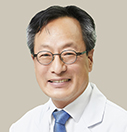
-

-
- 소 속: 분당차병원
-
전문분야
: 견관절/슬관절
- 직 위: 교수(분당차병원장)
- 메 일: 비공개
- 전 화: 1577-4488
- 팩 스:
- 주 소: 경기도 성남시 분당구 야탑로 59
- 홈페이지:
탭메뉴

주요발표논문
| 제목 |
관절 연골에 대한 기초 과학 |
등록일 |
20150401 |
다운로드 |

|
|
대한관절경학회지
발행정보 Year : 2009, Volume : 13, Number : 3, page : 189 ~ 192
Although the articular cartilage is only a few milimiters thick, it has surprising stiffness to compression, exceptional ability to distribute load minimizing peak stress on subchondral bone and great durability.In many instances, it help to preserve normal joint function for more than 80 years. Varying in thickness, cell density, matrix composition, mechanical properties even within the same joint, it provides low-friction and pain free-motion. However, it lacks a blood or lymphatic supply and neurological elements are absent. It shows limited healing potential because of poor regenerative capacity.
|



Copyright ⓒ chamc, All rights reserved.

